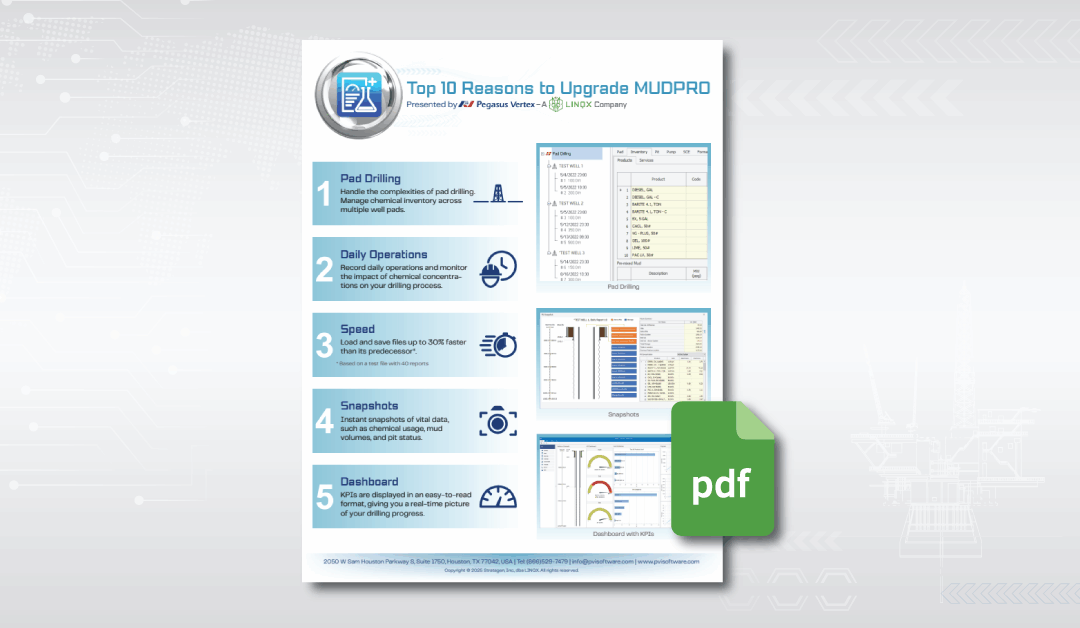Mud reporting has always been more than paperwork—it’s the operational record that connects drilling performance, fluid properties, and well stability. For decades, engineers have relied on it to monitor chemical usage, track pit levels, and manage inventory. But the pace of drilling has changed. Multi-well pads, shorter drilling windows, and increasingly complex fluid programs demand a level of precision and speed that traditional reporting systems can no longer deliver.
The Cost of Outdated Reporting
When reporting tools lag behind operational needs, engineers end up working harder to keep up with data rather than using data to make better decisions. Common challenges include:
- Reactive problem-solving: Data delays mean issues like rising solids or fluid losses are noticed only after they’ve already escalated.
- Fragmented visibility: Critical details—mud volumes, chemical concentrations, pit status—are scattered across multiple files or formats.
- Bottlenecked workflows: Saving and sharing large report files is slow, reducing how quickly teams can act on information.
- Missed insights: Without advanced analytics, subtle patterns—such as recurring fluid property changes across wells—remain buried in the data.
These gaps directly impact well performance and costs. A single missed early warning can lead to downtime, excess chemical consumption, or stability issues that ripple through the entire operation.
What an Upgrade Really Delivers
Modern mud reporting systems aren’t just digital notebooks—they’re operational intelligence platforms. They provide:
- Real-time snapshots of pit levels, mud volumes, and chemical usage, ensuring engineers always have an up-to-date picture of the well.
- Customizable reports that adapt to different needs—from rig crews who need daily clarity, to office teams focused on KPIs, to regulators requiring compliance-ready formats.
- Well-to-well comparisons that highlight performance differences across a pad, enabling faster learning and better planning for subsequent wells.
- Predictive insights through AI analysis of daily data, spotting anomalies or trends long before they appear as costly problems.
- Efficiency gains, with systems capable of loading and saving large datasets up to 30% faster than legacy tools.
For a overview of specific features and upgrades, you can view our Top 10 Reasons to Upgrade MUDPRO brochure.
Together, these capabilities shift mud reporting from a reactive chore into a proactive tool for operational optimization. Engineers are able to spend less time formatting data and more time interpreting it, turning mud reporting into a direct driver of ROI.
The Bigger Picture
For teams looking to modernize, the goal isn’t simply to “go digital.” It’s to build a workflow where data moves seamlessly across the operation—from field entry, to real-time monitoring, to AI-driven analysis, to actionable reporting. MUDPRO is an example of software designed around this approach. When engineers are equipped with this kind of system, they don’t just respond to drilling challenges—they stay ahead of them.
From Theory to Application
On August 27, we’ll hosting a webinar—“From Pad Drilling to Alerts: Next-Gen Mud Reporting with MUDPRO”—where our engineers will walk through these advanced capabilities and show how upgraded mud reporting changes the day-to-day reality of drilling fluids management. See how we do it. Reach out to us to learn more about MUDPRO.

